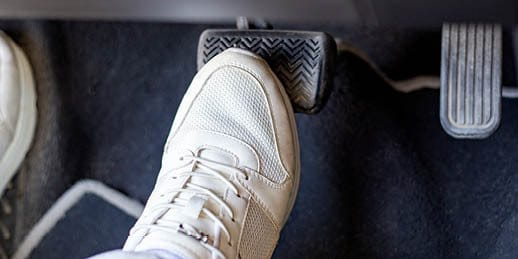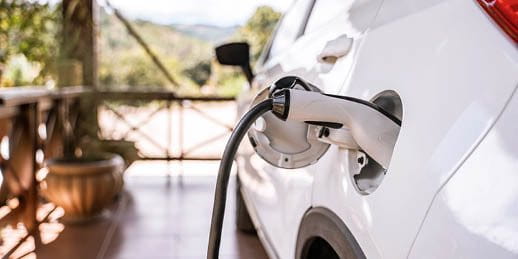How car leasing works
If Peter leases a car, he will pay a deposit and monthly leasing installments for a defined term and number of kilometers (for instance, 10,000 kilometers a year). The terms and conditions are governed by a leasing agreement between Peter, the garage and the leasing company. The leasing company continues to own the car; Peter is merely the holder and pays for its use. Once the agreed term expires, he has three options:
- He can return the car to the leasing company.
- He can pay off the remaining sum and gain ownership of the vehicle, if the leasing agreement permits this.
- He can extend the lease with new terms and conditions.
With the leasing installments, Peter pays back part of the amount still outstanding for the vehicle after the deposit each month, plus interest. At present, depending on the offer, leasing installments accrue interest of 3.9% to 5.9%, with lower rates in some cases even without manufacturer promotions. In addition, leasing vehicles generally require comprehensive insurance. Leasing installments are tax deductible for companies if the vehicle is used for business purposes, but not for private individuals like Peter.
How a personal loan works
If Peter buys the vehicle and takes possession of the car keys, it belongs to him. He can finance the purchase with a loan. He owes the bank money in return, which he has to pay back within the contractually agreed term, including interest. Effective loan interest rates are currently 3.5% to 9.95%. Offers vary and depend on the creditworthiness of the debtor. As the owner, Peter can decide for himself whether he wants to take out comprehensive insurance or not. However, comprehensive insurance would make sense to relieve the strain on his budget in the event of a claim. Debts and interest due are generally tax deductible.
Leasing: Advantages and disadvantages
Advantages
- Flexible: terms of 12, 24, 36, 48 or 60 months
- Easy switch to an up-to-date model at the end of the term (new agreement)
- Generally no major repairs (wear and tear) when a new vehicle is leased
- Fixed surrender value, irrespective of the change in value development (no risk of a loss in value)
Disadvantages
- Car leasing can affect creditworthiness and consequently other financing
- The vehicle is returned after the lease expires (or can be purchased at the surrender value)
- Claims are settled after return, with the customer only bearing the deductible
- The leasing agreement can be canceled, but this costs money
Personal loan: Advantages and disadvantages
Advantages
- Flexible terms of 12 to 60 or more months
- The vehicle belongs to the loan recipient, in our case Peter
- Depending on the contract, Peter can repay the loan more quickly and shorten the term of the contract
- Free choice of workshop for service or repairs
Disadvantages
- Car financing can affect creditworthiness and consequently other financing
- Interest rates are higher than for leasing
- Expensive repairs (wear and tear) are possible after a few years
- The vehicle belongs to the holder, so he bears the risk of a loss in value
- Vehicle must be sold by the holder
Cost comparison: Leasing vs. loan
| Loan at 3.9% | Leasing at 3.9% | |
| Purchase price including extras | 49,000 | 49,000 |
| Deposit (1st installment) | 9,800 | |
| Term | 48 months | 48 months |
| Interest rate | 3.9% | 3.9% |
| Monthly installments | 1,102.70 | 519.81 |
| Total costs without purchase | 34,750.88 | |
| Residual value | 19,600 | |
| Total costs with purchase | 52,929.60 | 54,350.88 |
| Leasing factor* |
1.06 |
* The leasing factor allows you to determine how good the leasing company's offer is. Divide the monthly leasing installment by the purchase price and multiply the result by 100. The lower the value, the better the offer. Values under 1 count as good.
In addition to the leasing or loan costs, there are also
- taxes and duties,
- possibly the motorway permit,
- service and repairs, if not covered by the manufacturer in the first few years,
- tires and vehicle care,
- parking costs,
- fuel and
- fines.
If Peter buys the car, he needs mandatory liability insurance for damage to objects or bodily injury caused by him. If he leases the vehicle, in addition to motorists' liability insurance, he generally also needs mandatory comprehensive insurance for damage to his own vehicle. This is prescribed by the leasing agreement.
Lease and use or buy and own?
If you know that you need the car for a specific period or regularly want to drive the latest model, leasing makes sense. If you want to keep the vehicle, loan financing is often more attractive. Especially as you save on tax with a purchase financed by a loan. The debt and interest due can be deducted from your taxable income. By contrast, leasing provides better protection against a loss in value, which is particularly important with electric vehicles. If, in three or four years, smaller batteries offer twice as much range, current models will not be worth much.
Renting instead of buying or leasing
There are alternatives to loan or leasing agreements. Nicoletta, Peter's partner, has told him about CARIFY. The start-up rents out vehicles for one month, three months, six months or longer. Insurance, registration, service, maintenance, taxes, replacement tires and the motorway permit are included in the subscription. In return, the renter pays for the subscription costs, fuel, parking, any fines and, in the event of a loss, the insurance deductible. The subscription is more flexible than buying or leasing a car and can be canceled in any month following the end of the minimum term. For example, if Nicoletta and Peter need a bigger car in a few years because they want children.





